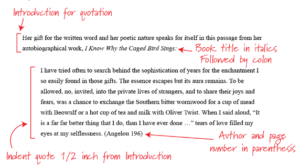Suppose you are reading a book on the topic of utilizing primary data collection in PhD research and wish to include some of the information in say, your own book or research on the same topic, it is important to properly cite the source. This can be done by including the author’s name, year of publication, and page number in parentheses after the quoted material. This method of citation is referred to as “Parenthetical Citation. Parenthetical citations can be done in different ways of which one way is MLA formatting. In this blog, we will understand how to apply parenthetical citations in MLA formatting and what are its pros and cons. But let us first dive deep into parenthetical citation and MLA formatting.
What is a Parenthetical citation?
Parenthetical citation, also known as an in-text citation, is a method of citing sources used in a research paper or other written work. In this method, a citation is included in the text of the paper in parentheses, directly following the quote or paraphrasing from the source. The citation typically includes the author’s last name and the publication date of the source. For example, if you are citing a quote from a book by John Smith published in 2020, the parenthetical citation would appear as follows: (Smith, 2020). When multiple works by the same author are cited within the text, include the author’s name in the first citation and use “Author” in subsequent citations. For example, (Smith, 2020) and (Smith, 2021) and then (Author, 2022). It’s important to note that the parenthetical citation is only one aspect of citation and referencing. In addition to in-text citations, proper referencing requires a reference list at the end of the paper, providing full citations for all sources cited in the text.
What is MLA formatting?
MLA (Modern Language Association) formatting is a set of guidelines for writing and formatting papers in the field of literature and language. It is typically used in high school and college-level research papers. MLA formatting includes guidelines for formatting the paper, including margins, font, line spacing, and the citation of sources. It also includes guidelines for citing sources in the text of the paper using in-text citations and a Works Cited page at the end of the paper.
How to apply parenthetical citations in MLA formatting and what are its pros and cons

Figure 1: Example of a parenthetical citation in MLA formatting
(Source: https://www.bibliography.com/how-to/in-text-and-parenthetical-citations/)
How to apply
In MLA formatting, parenthetical citations are used to cite sources within the text of a paper. The basic format for a parenthetical citation in MLA is to include the author’s last name and the page number(s) where the information being cited can be found, separated by a comma.
For example:
It’s important to note that MLA format also has specific rules for citing different types of sources, such as electronic sources, sources with multiple authors, and sources with no authors. It’s recommended you consult the MLA Handbook for guidance on these specific cases.
Pros and cons
Pros of parenthetical citation include:
Cons of parenthetical citations include
In summary, we can say that parenthetical citations portray an essential role not only in MLA formatting but also in APA formatting if it is properly used. Hence, you should use it after understanding all the advantages and disadvantages or you can reach out to https://www.24x7editing.com/ for more clarification.